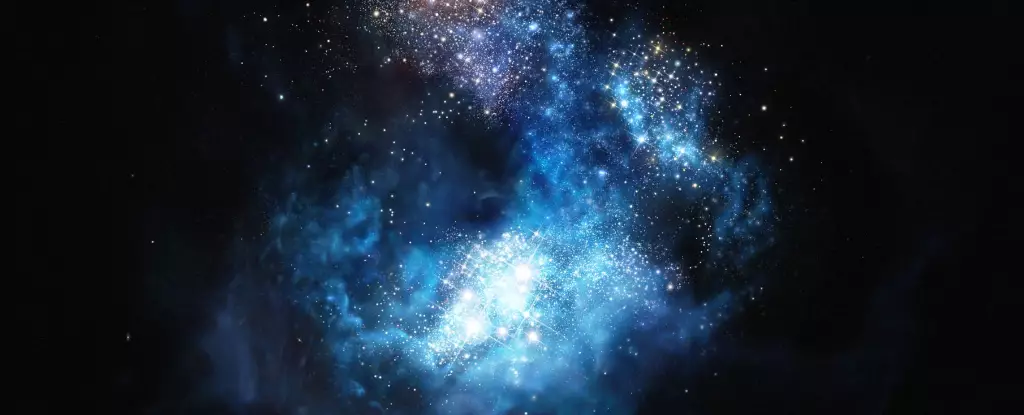Water is universally acknowledged as a crucial component of life, acting as a solvent that facilitates biochemical reactions necessary for living organisms. From microscopic bacteria to towering redwoods, life as we know it is intricately tied to this unique molecule. Interestingly, Earth’s abundance of water is not just vital for supporting existing life—it’s also foundational to life itself, influencing evolutionary processes and planetary evolution. Recent astronomical research sheds light on the cosmic origins of this life-sustaining compound, hinting at a narrative that traces back billions of years to the universe’s early stars.
Water’s simplicity belies its complexity and significance. Composed of two hydrogen atoms bonded to a single oxygen atom, its molecular structure is straightforward yet incredibly stable. Hydrogen, the universe’s most abundant element, originated in the aftermath of the Big Bang, constituting the building blocks for more complex elements. Oxygen, on the other hand, was synthesized within the cores of massive stars through nuclear fusion, a process that emits energy and eventually leads to these stars’ explosive demise. It is through these cataclysmic events that the heavier elements—including oxygen, and by extension, water—are released into interstellar space, spreading throughout the cosmos.
Stars and Their Stellar Evolution: A Lifecycle of Water Production
Astronomers classify stars into distinctive populations based on their age and metallic content. Population I stars, like our Sun, are young and metal-rich, whereas Population II stars possess fewer metals, reflecting an earlier stage in cosmic evolution. Population III stars, which appeared in the universe’s infancy, are postulated to have been composed solely of hydrogen and helium. While we have yet to observe these primordial stars directly, their role in the cosmic evolution of elements is critically important. They are theorized to have laid the groundwork for the chemical richness we associate with the present-day universe.
Recent studies indicate that these early Population III stars may have played a pivotal role in enriching the cosmos with water. Researchers have modeled the life cycles of these stars, focusing on their supernova explosions, which can drastically alter the chemistry of surrounding regions. Specifically, the research examines both small and large early stars, suggesting that these stellar deaths released extensive quantities of water vapor into space, significantly altering the composition of molecular clouds in their wake.
Simulations and the Water Enrichment Hypothesis
Through advanced simulations, the research team sought to quantify the water produced by the explosions of these early stars. While smaller stars underwent typical supernova events, larger stars experienced a more dramatic fate through pair-instability supernovae. Such cataclysmic events are theorized to enrich the interstellar medium with gases, including water, at a rate much higher than contemporary stellar explosions.
The researchers estimate that the molecular clouds formed from the remnants of these early stellar explosions contained a water fraction 10 to 30 times that of the diffuse clouds we observe in the Milky Way today. Consequently, they propose that by approximately 100 to 200 million years after the Big Bang, conditions may have been ripe for life, should it have existed at that time. However, determining whether life emerged during this ostensibly favorable period remains an open question.
Despite the promising theories surrounding the origins of water, significant challenges persist in validating these claims. One central issue is the potential for ionization and other astrophysical processes to dismantle early water molecules. While ample water may have existed in the nascent universe, the conditions may not have remained stable enough to sustain it, giving way to a potentially ‘dry period’ before later stars—Population II and Population I—resumed the production of water we observe today.
In exploring the origins of water, we uncover a story that intertwines astrophysics, chemistry, and the deep biological underpinnings of life itself. The potential that the first stars seeded the universe with water reveals a profound linkage between cosmic processes and terrestrial phenomena, enriching our understanding of where we come from. As research unfolds, we may be led toward pivotal revelations about the nature of life in the universe and its dependence on these ancient, stellar forges. Indeed, the journey of water from its primordial origins to its present-day forms invites us to reflect on the intricate connections that bind the cosmos together.

